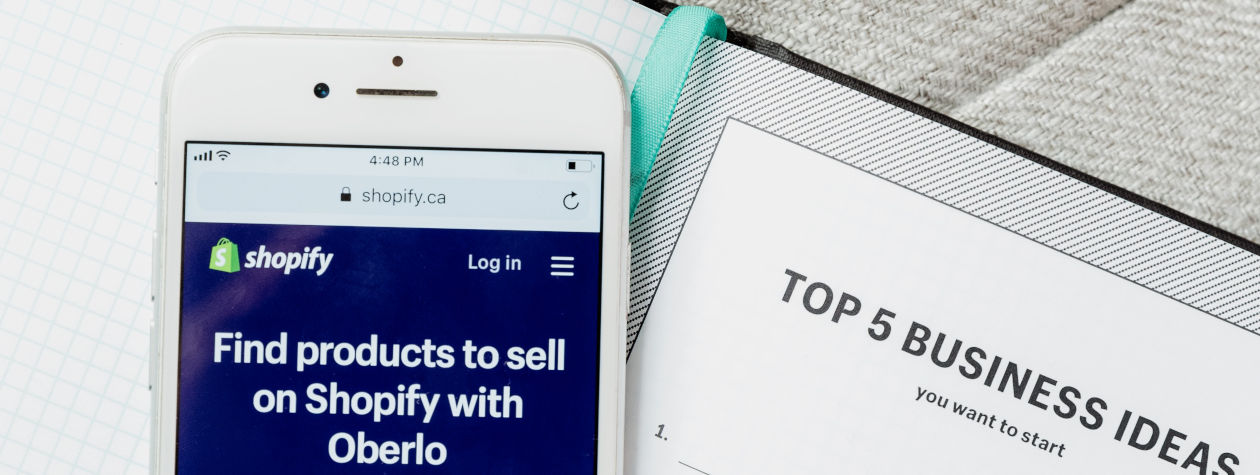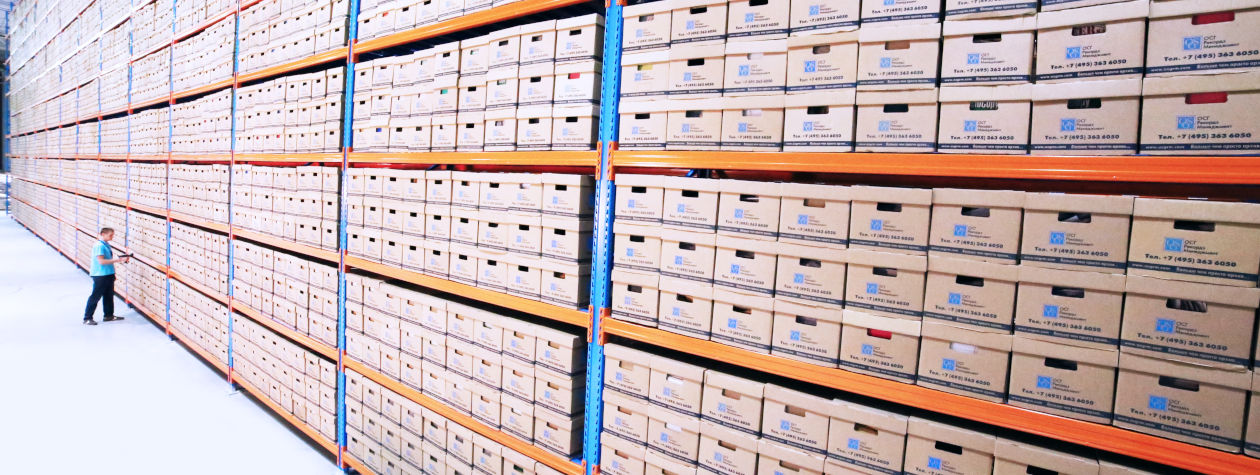Do you dream of a successful launch for your new ecommerce brand? You’ll want to begin with an ecommerce business startup checklist that acts as a road map and helps you build momentum from the get-go.
The rise in ecommerce shops and platforms means it’s easier than ever for you to start your own. Most people are forgoing the high street, instead buying items online from their sofa using a smartphone.
Starting any business isn’t easy, and success won’t be quick. But for the right person, starting an online store is a great opportunity. An ecommerce business startup checklist will give you a head start and make success more likely! Here’s how to build one.
#1 Start By Setting Some Goals
Before creating a new business, the best starting point is to consider what goals you have. It’s vital to have a goal (or goals). Without any, you’re walking aimlessly and won’t be able to measure what you’ve achieved.
Your goal could be working set hours, being able to golf on Friday, or providing a certain level of income. It doesn’t matter what your goal is. But it does matter that you have one.
Every goal you set should be SMART, which stands for Specific, Measurable, Achievable, Realistic, and have a Time period. By using SMART goals, you can continue to measure your progress.
I’m a massive fan of setting 5-year goals and breaking them down into yearly and monthly goals. Having such a plan means you have a vision you’re working towards but also are being realistic.
#2 What Are You Selling?
What will you start selling? It might change over time, but it’s worth having a strong idea of what items you’ll sell. That way, you can find a supplier, carry out market research and calculate the profit potential.
While I ended up running a Jewelry ecommerce brand with customers in 12 countries, I started buying job lots on eBay, splitting them up, and selling individual items on eBay and Amazon. Before selling Maserati watches, I sold washing lines, wallets, and wooden wine boxes!
It’s important to price items so you can make a profit. You want to model your numbers to ensure you can run a business and not an expensive hobby!
If you buy something for $1 and sell it for $2, you’ll lose money as you haven’t included the cost of shipping or overheads. You should include all potential costs in your calculations to ensure every sale is profitable!

#3 Define Your Target Market
Now you have products to sell, you need to pick who you’ll try to sell them to. If you try to please everyone, you’ll end up being nothing to everyone! So, proceed with caution!
There’s a ton of bad advice online about picking a niche. Most of this advice is dangerous as you’re told to pick a group of people out of thin air. I’d encourage you to research the market and pick a few target customers based on their latent demand for your items.
In your head, you could want to target three-legged donkey owners with your fused-glass art, as your friend who inspired you to start the business has one. However, this market might have zero demand for what you’re offering.
So you’d want to target animal owners in general. From there, you can hone down on what your ideal customer looks like based on the data you can collect from actual paying customers. As you talk to more people, you’ll better understand who you’re targeting.
#4 Pick A Catchy Business Name
What you sell might inform the choice of your business name. But you want to pick a name that sounds unique and aligns with your purpose. If Bentley Motor Cars sold chocolates, you’d be confused. Likewise, if See’s candies sold speedboats, you’d be perplexed.
Another aspect to consider is the length. You want to keep it short and punchy. No one will remember a business that has a six-word name!
You could name your business after a special place, your current road, or your name. I went with AJS Digital Group as it covers what we do. My jewelry brand was called James Samson, a combination of my middle name and my mother’s maiden name.
It’s worth brainstorming a few different options. From there, see if the domain is available and if someone is already using the name on social media networks. Nothing is as bad as someone already owning your ideal domain or Instagram handle.
#5 Branding 101
With a business name, it’s time to think about branding. Even a tiny ecommerce startup like yours deserves a strong brand from the get-go. Your brand is more than the logo or colors, it’s a physical representation of how you make someone feel when they hear your business’s name.
Start by considering what words and phrases you want people to associate with your business. Next, pick a font and two colors that tie into these. You can now play with building a logo.
And that’s my friend, is the basics of branding. It will develop with you as the business grows and changes. So don’t worry if you haven’t got it perfect.

#6 Pick And Buy A Domain Name
Now you have a business name and some product ideas, you need a domain name for your ecommerce website. Ideally, you’d buy one that’s just your business name.
However, you might find it’s already taken. So you might need to add what you do to find an available domain. You can also use hyphens to create a unique domain name.
If you sell bikes and are called Mike, and so have called your business Mike’s Bikes. You might find that www.mikesbikes.com isn’t available. So, you could try www.mike-bikes.com or www.mikebikesportland.com.
You can buy domains from a range of suppliers, including Hostinger and GoDaddy. Look for the cheapest price, as most domains are commodity items.
Part of buying a new domain, you need to register your domain using a domain registrar. They will ask you for details like your name, address, email, phone number, etc.
#7 Apply for Your Business Licenses and Permits
In some countries, you need a business license and permits to operate an ecommerce business. You might need to register to pay sales tax. So, you must do your research and call your local government office.
If you have an accountant or lawyer, they should be able to help you startup your online business correctly. They will also be able to help you gather the necessary information to open a bank account. Hiring an accountant at the start is often money well spent.
With the majority of products, you can start selling with minimal red tape. However, some industries, such as medicine, food, or beauty products, require you to hold additional licenses before you can legally sell anything. Again, you’ll need to do your research.

#8 Build and Design Your Web Store
A good online shop is easy to navigate, read, and works. You’d be surprised how many websites we audit that have poor user experience. They have many missing pages linked from the homepage, overblown navigation menus with every possible option, and a tiny font size.
To build and design your online store, there are a number of options, like working with an experienced eCommerce agency, using a Shopify page builder, or hiring developers/freelancers.
Thankfully, by this point, you’re a few steps ahead of most ecommerce startups as you have a logo, branding colors, and font. You can roll these elements into your website with ease.
Another common issue is poor photos. Not everyone can take a picture that good enough for a website. They might be fine for social media but project the image you want to when pasted onto your ecommerce store.
Ensure your website loads fast, as your potential customer won’t wait. And make it easy to find the cart and checkout! You also want to include a compelling about us page that creates an emotional reaction from your ideal customer.
It’s worth investing in good design from the start. Your customer expects a visually appealing and user-friendly website. So don’t disappoint!
#8 Mobile-Supported Website
We’re glued more and more to our smartphones. So if your website isn’t mobile-friendly, you’ll lose out on sales. It’s best to work with a designer who can create a store that looks fantastic across different browsers and viewpoints.
#9 Don’t Forget Important Pages Like ‘Terms & Conditions’ and ‘Shipping & Returns’
Many ecommerce startups focus on getting the products online but pay little attention to key web pages that drive customers toward making a purchase. There are 3 key pages your website should have: About Us, Terms and Conditions, and Shipping and Returns.
These pages reassure potential customers but also protect your business. They build trust and reduce the number of emails or calls you’ll get asking fairly basic questions. You’ll also find these pages reduce cart abandonment as everything is clear, and there are no hidden costs.
#10 Set Up Payment Methods
You won’t say in business long if customers can’t pay you! So, the next step in our ecommerce business startup checklist is to set up credit card payments. It’s easier than you might think, as all ecommerce platforms will offer several options.
You could use PayPal, Stripe, or the Shopify payment gateway. All of these are simple to use and allow you to take payments within minutes.
#11 Create A Marketing Strategy and Plan
To entice people to buy your products, you need a marketing strategy and a marketing plan. Creating these isn’t as complex as you think!
Strategy is simply picking the game you want to play and defining how you’ll win at it. It’s the overarching plan of how you’ll achieve your goals.
Your marketing plan explains what tactics you’ll try to build awareness of your online shop and drive new customers towards it. Your tactics will develop over time, but your strategy stays the same.

#12 Promote Your Business
With a marketing plan in place, your next step is to take action. At the start, it might feel like you’re throwing a lot of stuff at the wall and seeing what sticks, but keep going. In time, you’ll find what works and be able to refine your marketing plan.
I recommend doing things that don’t scale, especially at the beginning. These include talking directly with customers, calling the press, and hanging out in related forums. You’ll gather plenty of information and put a name to your brand that makes it seem more personal.
#13 Stock Inventory
If you haven’t already, you need to buy inventory. Your customers expect you to have items in stock and be able to receive them within a few days. You need good reviews to grow, so delivering items promptly is highly important.
#13 Choosing Packaging
It’s worth buying a range of packaging materials, such as padded envelopes, cardboard boxes, parcel tape, and more. You don’t need a room full of the stuff, but having plenty will ensure you can get items out quickly.
#14 Postage
The next step is to calculate the cost of the different postage options you want to offer. You can use a marketplace to buy postage for parcels and your national postage system for smaller items.
Understanding all of the possible postage options will take time and might be confusing. But it’s worth knowing the system as you can ensure packages get to your clients in good time without costing you a small fortune.

#15 Systems And Processes
From the start, you should be thinking about how you can remove yourself from the day-to-day operations of running your ecommerce brand. This might seem like strange advice for an ecommerce business startup checklist, but it’s important.
You don’t want to always have to pick and pack or answer customer support tickets. The best way to make it easy to scale is to write down the steps you take to get an outcome.
It could be as simple as a checklist of what to post on social or how to deal with compliments. The more you document processes, the easier you will find growing the business and hiring people.
So invest in building systems and processes from the start and watch the results.
#16 Holidays
The biggest mistake I’ve made in my business career is not taking time off or scheduling holidays. You might find for the first year, you’re working around the clock. But this isn’t sustainable.
So, the next step in our ecommerce business startup checklist is to book a holiday or two each year. It doesn’t need to be a fancy getaway, just the chance to get away from your normal daily life and recharge. Don’t try to be a hero and work 24/7. Instead, build balance into your life.
Launch Your Online Store Using This Ecommerce Business Startup Checklist!
Now, it’s time to launch your business. It’ll be a bumpy road, but this ecommerce business startup checklist will ensure you’re on the right track and making process toward your goals.
Don’t wait for perfect. It doesn’t exist. Instead, get started and improve elements along the way. Using this ecommerce business startup checklist, you’ll be miles ahead of your competitors and have a firm foundation for future growth.
Want an actionable plan to grow your online sales and reach your business goals? Let's build one together. Book Your Get To Know You Call







